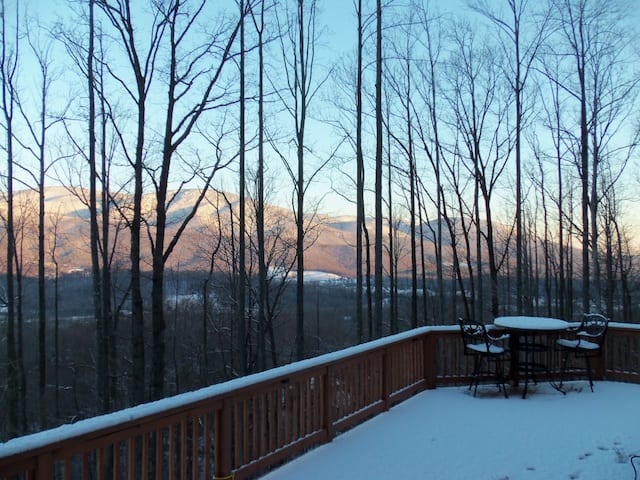 Several days ago, friends visited our mountain home Vanaprastha. While admiring views of Virginia’s Three Ridges Wilderness area and Rockfish Valley, they expressed concern about the tall trees near the house being subject to wind. Curious about the relationship between wind and trees, I did a little Internet research.
Several days ago, friends visited our mountain home Vanaprastha. While admiring views of Virginia’s Three Ridges Wilderness area and Rockfish Valley, they expressed concern about the tall trees near the house being subject to wind. Curious about the relationship between wind and trees, I did a little Internet research.
Trees have well-documented advantages. They provide habitats for animals, birds and insects and afford shade and windbreaks for human habitation. Trees slow rainfall, erosion, flooding and carbon dioxide, and filter pollutants. Trees are poetic, I think that I shall never see, a poem lovely as a tree, and metaphorical: People are trees buffeted by the winds of life. (Note how wind snuck in there, too.)
Except for wind power, as in sailing, irrigation or energy generation, wind articles online overwhelmingly emphasized danger. Using the Boolean search operator AND (“wind AND trees”), I found that the number one adjective for wind was ‘damaging’ and there’s a lot of empirical proof – think of last summer’s derecho. Wind limits tree growth. Wind knocks down and uproots trees, what’s known as wind-throw. Wind damages plant cells through wind-blown sand.
There are journals dedicated solely to forest research, much of which involves wind affects, and there are conferences. Every few years, the International Union of Forest Research Organizations (IUFRO) meets to discuss trees and wind. Interdisciplinary topics at the last conference included: Wind climatology, Airflow over forest stands, edges, and clearings, Topography effects of wind loading on trees, Physical modeling of airflow around trees, Mechanics of trees under wind loading, Ecological dynamics and strong winds, Tree level management to reduce wind damage – and so on.
The people-tree metaphor seemed rather dour even to a New Englander like me until I read about the wind’s role in seed dispersal, pollination and distribution of life-sustaining moisture – and more. Enter William R. Chaney, Professor of Tree Physiology, Department of Forestry and Natural Resources at Purdue University. In his article How Wind Affects Trees, he wrote, “Wind in trees does more than rustle leaves. The gentle breezes, prevailing winds, and cyclonic occurrences that arise from daily and seasonal changes in solar heating all affect the growth, form, and very survival of trees.” Destructive winds, the strongest reliably recorded being 231mph on Mount Washington, can be catastrophic events, no doubt about it, but moderate wind, although more subtle, seems to have a far greater impact on trees, and for the better.
Heat loss, gas exchange and growth of trunks – the very shape of trees, trunks and root systems – can be influenced by wind. Trees “…tend to form more structural root mass on the leeward side when exposed to persistent prevailing winds from one direction. This adaptive growth in response to wind movement improves the rigidity of the soil-root plate and counteracts the increasing vulnerability to wind-throw as a tree grows in height,” according to Professor Chaney. Trees can be strengthened by wind to withstand stronger winds, and cells damaged by wind-blown sand can become stronger for their reparative efforts.
So to adjust the metaphor, people are trees buffeted and shaped by the winds of life and are strengthened as they withstand and adapt. Like the tall trees of Vanaprastha, people who face the wind are the better for it.



Strengthening though it may be, when I face wind in one direction, I still hope to have it at my back coming home ;~)
As in the Irish prayer: May the wind be always at your back…
Thanks for you comment!
I like your analogy that people are trees buffeted and shaped by the winds of life. I love photographing trees; especially old ones that stand tall and magnificent . . . alone in a field. I imagine they have seen a lot in life.
Thanks so much for your comment. Yes, indeed, trees that stand alone develop a special kind of character, but don’t compete with other trees. The trees at Vanaprastha reach for the sky and rely on wind to scatter their seeds. I guess we like trees adapt to conditions in which we find ourselves.